Australia
The Land of Wonder Down Under
Welcome to Australia, a captivating land of awe-inspiring contrasts and breathtaking beauty. From pristine beaches to lush rainforests, vast deserts to iconic wildlife, Australia offers a unique journey. Explore coastal wonders, bask in the sun, and immerse yourself in crystal-clear waters. Venture into ancient rainforests alive with unique flora and fauna. Experience the vastness of the Outback, where ochre landscapes stretch endlessly. Delve into vibrant cities, savor world-class cuisine, immerse in vibrant arts scenes, and embrace the warm and welcoming atmosphere. Australia promises an unforgettable experience, whether you seek adventure, relaxation, or cultural exploration.
Top Destinations
Sydney
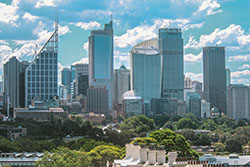
Photo by Belle-co / Pexels |
Sydney, the vibrant and bustling metropolis, proudly stands as Australia's most populous city. It's home to iconic landmarks that grace postcards and captivate the world's imagination. Marvel at the architectural wonder of the Sydney Opera House, an awe-inspiring masterpiece that adorns the city's harbor. Cross the magnificent Sydney Harbour Bridge and savor panoramic views of this picturesque city. |
Things to Do and See:
Sydney Harbour Bridge: Often called the "Coathanger," this impressive steel arch bridge offers breathtaking views of the Sydney skyline and can be climbed for an unforgettable experience.
Bondi Beach: One of Sydney's most famous beaches, Bondi offers golden sands, great surfing opportunities, and a lively atmosphere with cafes, restaurants, and shops.
The Rocks: Located near the Sydney Harbour Bridge, The Rocks is a historic area with cobblestone streets, charming architecture, art galleries, and bustling markets.
Royal Botanic Garden: This stunning garden is situated near the Sydney Opera House and offers beautiful landscapes, exotic plants, and tranquil paths for leisurely strolls.
Darling Harbour: A vibrant waterfront precinct, Darling Harbour features attractions such as SEA LIFE Sydney Aquarium, Madame Tussauds, Wild Life Sydney Zoo, and numerous restaurants and entertainment venues.
Taronga Zoo: Located on the shores of Sydney Harbour, Taronga Zoo is home to a wide variety of animals from around the world, including kangaroos, koalas, and Australian native wildlife.
Art Gallery of New South Wales: This art museum houses an extensive collection of Australian, Aboriginal, European, and Asian artworks, including paintings, sculptures, and photography.
The Royal National Park: Just outside Sydney, this national park offers stunning coastal scenery, hiking trails, secluded beaches, and picnic spots amidst nature.
Sydney Tower Eye: Enjoy panoramic views of Sydney from the observation deck of the Sydney Tower Eye, the tallest building in the city.
The Australian Museum: Discover Australia's natural history and cultural heritage at the oldest museum in the country, featuring diverse exhibits on Indigenous cultures, fossils, minerals, and more.
These are just a few examples of the many attractions Sydney has to offer. Whether you're interested in nature, history, culture, or simply enjoying the city's vibrant atmosphere, Sydney has something for everyone.
Best Time to Visit: Sydney is a vibrant city with plenty to offer year-round. Note that the seasons are reversed in the southern hemisphere so keep this in mind when you book your travel. However, if you're looking for the best time to visit, many people find that September-November and March-May are ideal seasons. It can get hot during December-February which is their Summer but if you prefer warmer weather its a good time to visit the beaches, but heat waves can occur.
Melbourne
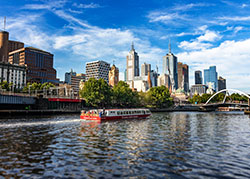
Photo by John Simmons/ Pexels |
As the second most populous city in Australia, Melbourne is renowned for its vibrant arts and culture scene. Delight in the diverse culinary offerings, from trendy cafes to renowned restaurants. Take a relaxing meander through its charming laneways adorned with street art. Experience Melbourne's famous sporting culture at iconic venues such as the Melbourne Cricket Ground. |
Best Time to Visit: September-November is Spring in Melbourne and it is beautiful, with blossoming flowers and mild temperatures. It's an excellent time to explore the city's parks and gardens, such as the Royal Botanic Gardens or Fitzroy Gardens. Sporting enthusiasts can catch the excitement of the Spring Racing Carnival, including the iconic Melbourne Cup.
March-May, is Autumn in Melbourne which brings milder temperatures and colorful foliage. It's a lovely time to explore the city's cultural scene, including its renowned art galleries, museums, and theaters.
Cairns
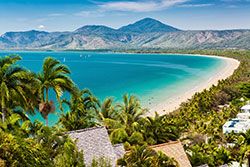
Photo by Mvaligursky / iStock |
Nestled in the heart of Queensland, Cairns offers a gateway to breathtaking beaches and verdant rainforests. For example, you can take a day trip to the Great Barrier Reef and go diving or a snorkeling and discover a treasure trove of marine biodiversity. Explore the lush Daintree Rainforest, one of the world's oldest rainforests, and witness its captivating flora and fauna. Cairns is a beautiful, tropical paradise that will delight you with the wonders of nature. |
Best Time to Visit: Dry Season (May-October): This is generally considered the best time to visit Cairns. The weather is warm and pleasant, with low humidity and less rainfall. It's an excellent time for outdoor activities such as snorkeling, diving, and exploring the Great Barrier Reef. The dry season is also popular for rainforest tours, hiking in the nearby Daintree Rainforest, and visiting Cairns' surrounding attractions.
Wet Season (November-April): The wet season is characterized by higher temperatures, humidity, and occasional heavy rainfall. While it can be hot and humid, the wet season also offers its own unique charm. The rain revitalizes the rainforests, and waterfalls flow abundantly. It's a quieter period with fewer tourists, and you may find better deals on accommodations and activities. However, it's essential to be aware of the potential for tropical storms and the temporary closures of certain outdoor attractions due to weather conditions.
Brisbane
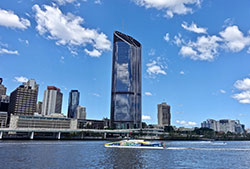
Photo by Pixabay / Pexals |
If you dream of retiring close to the beach, Brisbane, the vibrant capital of Queensland, is the perfect destination for you. Immerse yourself in a laid-back coastal lifestyle while enjoying the city's numerous cultural attractions. Lose yourself in the artistic wonders of the Queensland Art Gallery, or delve into the history of Brisbane at the Museum of Brisbane. |
With its golden beaches and a warm climate, Brisbane provides the ideal backdrop for a relaxed and fulfilling vacation or retirement destination.
Best Time to Visit: March to May (Autumn) and September to November (Spring) seasons. These periods offer pleasant weather with mild temperatures and lower humidity compared to other times of the year.
Perth
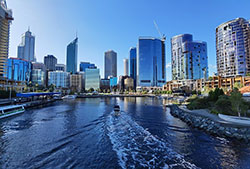
Photo by Elizabeth Quay |
Escape to the picturesque capital of Western Australia, Perth, a city brimming with natural beauty and tranquility. Indulge in the serene ambiance of its stunning beaches or venture into the nearby wine regions for a delightful tasting experience. Perth is a haven for outdoor enthusiasts, and offers activities such as hiking, cycling, and watersports. |
Perth is a wonderful destination to visit and experience Australian culture and hospitality where you can enjoy their laid-back lifestyle and immerse yourself in the serenity of this special city.
Best Time to Visit: September to November (Spring) or March to May (autumn). These periods offer pleasant weather, with mild temperatures and less rainfall compared to other times of the year.
Adelaide
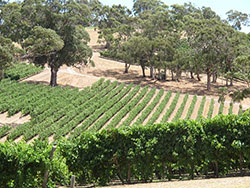
Photo by Jo Spargo / Pixabay |
In the peaceful capital of South Australia, Adelaide, a slower pace of life awaits you. Explore the region's world-class wineries and indulge in delectable wines and culinary delights. Immerse yourself in culture at the Art Gallery of South Australia or discover the fascinating exhibits of the South Australian Museum. Adelaide is a city that embraces art, history, and a relaxed lifestyle, making it an ideal destination for retirees seeking a tranquil and enriching environment. |
Best Time to Visit: September to November (Spring) or March to May (autumn). These periods offer mild temperatures, pleasant weather, and a range of exciting events and activities.
Hobart
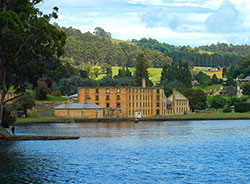
Photo by Bangkokflame / Pixabay |
Perched on the island of Tasmania, Hobart beckons with its historical charm and breathtaking landscapes. Wander through the city's streets adorned with captivating heritage buildings, or venture to the summit of Mount Wellington for panoramic views of the city and its surrounding natural wonders. Discover the beauty of the Tasman Peninsula and immerse yourself in the tranquility of this captivating island retreat. |
Hobart offers a variety of art galleries, museums, and renowned restaurants. The city is known for its vibrant arts scene, with numerous galleries showcasing local and international artwork. The Museum of Old and New Art (MONA) is a prominent attraction, featuring a diverse collection of contemporary art. Additionally, Hobart is home to several other museums, such as the Tasmanian Museum and Art Gallery, which showcases Tasmanian history, art, and natural sciences. The city's culinary scene has also gained recognition, with a range of acclaimed restaurants serving both local and international cuisine. Visitors can enjoy a diverse selection of dining options, including seafood, farm-to-table dishes, and fusion cuisine.
Best Time to Visit: During the summer months of December to February. Hobart experiences a temperate maritime climate with mild summers and cool winters.
Darwin
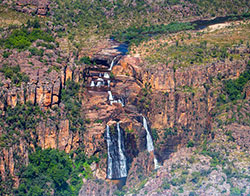
Image by Squirrel Photos / Pixabay |
Experience the untamed beauty of the Australian outback in Darwin, the capital of the Northern Territory. Immerse yourself in Aboriginal culture and visit cultural attractions that showcase the rich heritage of the region. Explore the awe-inspiring Kakadu National Park, a UNESCO World Heritage Site, or immerse yourself in the lush landscapes of the Litchfield National Park. Darwin promises a captivating blend of indigenous culture and stunning natural beauty. |
Best Time to Visit: During the dry season, which runs from May to September. This period offers pleasant weather with warm temperatures and minimal rainfall.
Uluru (Ayers Rock)
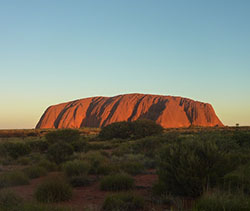
Photo by Jonas Schallenberg / Pexels |
Another popular destination in Australia is Uluru, a sacred site for the Aboriginal people which rises high above the mesmerizing Australian outback, captivating visitors with its majestic presence. Uluru is a sandstone monolith that is one of the most iconic landmarks in Australia and is a popular tourist destination. It is often referred to as "Ayer's Rock" by Europeans but the preferred name is Uluru. |
Immerse yourself in Aboriginal culture through guided tours and learn about the deep significance of this awe-inspiring place. Witness the breathtaking sunrise or sunset over Uluru and let the beauty of the outback fill your soul.
Other things you can do when visiting Uluru or Ayers Rock are to hike around Uluru: The Uluru-Kata Tjuta National Park offers a variety of hiking trails, including a 10-kilometer loop around Uluru. The hike is a great way to see the rock from different angles and to learn about its Aboriginal history.
Best Time to Visit: During March-May (Autumn) or September-November (Spring) seasons. During these times, the weather is mild and sunny, making it perfect for outdoor activities like hiking, biking, and sightseeing. The crowds start to thin out after the summer holidays, so you can enjoy more peace and quiet.
Great Barrier Reef
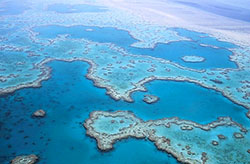
Photo by Frauke Feind / Pixabay |
Prepare to be spellbound by the wonders of the Great Barrier Reef, the world's largest coral reef system. Dive into an underwater paradise and marvel at the incredible diversity of marine life. Snorkel through vibrant coral gardens or embark on a scuba diving adventure to explore the hidden treasures of this UNESCO World Heritage Site. |
The Great Barrier Reef promises an enchanting experience that will leave you in awe of nature's creations. If you are planning to explore the Great Barrier Reef, book your flights and accommodations well in advance to secure your spot in this sought-after destination.
Best Time to Visit: Dry Season (May to October): This period is the peak tourist season as it offers generally sunny and dry weather. Temperatures range from 22°C to 29°C (72°F to 84°F), and the water is warm and clear, providing excellent visibility for diving and snorkeling. However, it's important to note that the months of June and July can be slightly cooler.
Migratory Season (June to August): During this time, you may have the chance to witness the annual migration of humpback whales as they pass through the Great Barrier Reef. It's an incredible spectacle to see these majestic creatures up close.
Coral Spawning (November to December): The Great Barrier Reef's corals release their eggs and sperm during this period, creating a mesmerizing display known as coral spawning. It's a unique opportunity for divers and snorkelers to witness this natural phenomenon.
Travel Planning Tips
When planning your trip to Australia, keep the following tips in mind:
- Australia is a vast country, so plan your itinerary carefully to make the most of your visit. From bustling cities to serene landscapes, there is an abundance of attractions to explore.
- While Australia is generally safe, it's always wise to remain aware of your surroundings and take necessary precautions to ensure your personal safety.
- Remember to pack sunscreen, sunglasses, and a hat to protect yourself from the strong Australian sun, ensuring a comfortable and enjoyable journey.
- Plan your trip meticulously, stay alert, and embrace the wonders that await you in this diverse and captivating land.
Best Time To Visit
Note the seasons in the southern hemisphere are reveresed from those of the northern hemisphere so plan accordingly when making your travel arrangements.
September-November and March-May are the ideal time to visit Australia as they offer pleasant weather and fewer crowds.
- September-November: (Spring) Expect warm and sunny weather for outdoor activities. The weather is pleasant during this time throughout the country. Northern states witness wildflower blooms.
- December-February: (Summer) It's the hottest and driest time. Ideal for beach vacations, swimming, surfing, and camping. However, it can be crowded, so book accommodations in advance. It's important to be prepared for the heat and high UV index. Make sure to pack sunscreen, hats, and lightweight clothing if you plan to visit during summer.
- March-May: (Autumn) Mild and sunny weather, perfect for outdoor activities like hiking, biking, and sightseeing. Crowds decrease after the summer holidays, offering more peace and quiet.
- June-August: (Winter) Cooler and wetter in most areas. Australian Alps have skiing and snowboarding, while wildflowers bloom in the southern states. Pack warm clothing for the cold regions.
Transportation:
- Domestic Flights: Australia has an extensive domestic flight network, making it easy to travel between major cities and regional areas. Airlines like Qantas, Virgin Australia, and Jetstar operate regular flights connecting different parts of the country.
- Trains: Train travel in Australia offers scenic journeys and comfortable options for long-distance travel. The iconic Indian Pacific connects Sydney, Adelaide, and Perth, while The Ghan runs from Adelaide to Darwin, showcasing the stunning Australian Outback. Additionally, there are other regional and suburban train services in different states.
- Buses and Coaches: Australia has an extensive network of buses and coaches, providing both short and long-distance travel options. Companies like Greyhound Australia and Premier Motor Service offer routes connecting major cities, regional areas, and popular tourist destinations.
- Cars and Campervans: Renting a car or campervan is a popular choice for exploring Australia independently. You can rent vehicles from various rental companies, and the country has well-maintained road networks and scenic drives. Keep in mind that Australia drives on the left-hand side of the road.
- Public Transport: Major cities like Sydney, Melbourne, Brisbane, Perth, and Adelaide have comprehensive public transportation systems, including trains, trams, buses, and ferries. These options are convenient for getting around within the cities and their suburbs.
- Ferries: Australia's vast coastline and numerous islands offer opportunities for ferry travel. For example, you can take a ferry to explore the stunning Great Barrier Reef, visit Tasmania from the mainland, or enjoy scenic routes in places like Sydney Harbour or the Swan River in Perth.
- Taxis and Ride-Sharing: Taxis are readily available in cities and larger towns, and ride-sharing services like Uber operate in major urban areas, providing convenient transportation options.
Remember to check the specific transportation options available in the region you plan to visit, as some remote areas may have limited or specialized transportation services.
Safety Tips:
- Stay Sun-Smart: Australia is known for its strong sunlight, so protect yourself from harmful UV rays. Wear sunscreen with a high SPF, a hat, sunglasses, and lightweight, breathable clothing. Seek shade during the hottest parts of the day and stay hydrated.
- Be Aware of Wildlife: Australia is home to unique and diverse wildlife, including some potentially dangerous species. Respect their habitats and observe from a safe distance. Be cautious when swimming in bodies of water known for marine life, and pay attention to any warning signs or local advice regarding wildlife encounters.
- Swim Safely: Australia has stunning beaches, but it's important to be mindful of water safety. Swim between the red and yellow flags at patrolled beaches, as they indicate the safest areas. Observe any warning signs related to marine stingers, jellyfish, or strong currents, and follow local advice regarding swimming conditions.
- Respect the Outdoors: If you plan on exploring Australia's beautiful national parks, forests, or rural areas, be prepared and follow safety guidelines. Inform others of your plans, have appropriate maps and navigation tools, carry enough water, wear suitable clothing and footwear, and be mindful of weather conditions. Check if any permits or park entry fees are required.
- Stay Hydrated: Australia's climate can be hot and arid, so it's important to stay hydrated, especially if you're engaging in outdoor activities. Carry a reusable water bottle and drink plenty of fluids throughout the day.
- Be Mindful of Bushfire Risk: Australia is prone to bushfires, particularly during the summer months. Stay informed about fire conditions in the areas you're visiting and follow any advice or warnings from local authorities. Avoid areas with active fires and be cautious when using fire or barbecues in designated areas.
- Secure Your Belongings: As with any destination, it's important to keep your belongings secure. Be mindful of your surroundings, especially in crowded areas, and take necessary precautions to protect your valuables, such as using lockers or keeping them within sight.
- Familiarize Yourself with Emergency Contacts: Save important contact numbers, including local emergency services, in your phone or keep them easily accessible. In Australia, the emergency number is 000 for immediate assistance.
- Travel Advisories Stay updated on current events, local regulations, and any travel advisories when traveling abroad. Visit the US Government State Department Travel Advisories web site to check on the status of your destination.
- Enroll in the STEP Program: Travelers are also urged to enroll in the U.S. State Department's Smart Traveler Enrollment Program (STEP) to receive security messages and to make it easier to locate them in an emergency. The Department uses these security messages to convey information about terrorist threats, security incidents, planned demonstrations, natural disasters, etc. In an emergency, please contact the nearest U.S. Embassy or consulate or call the following numbers: 1 (888) 407-4747 (toll-free in the United States and Canada) or 1 (202) 501-4444 from other countries.
Remember, these tips are general guidelines, and it's essential to research and adhere to any specific safety advice or regulations provided by local authorities or tourism organizations in the regions you plan to visit.
| |
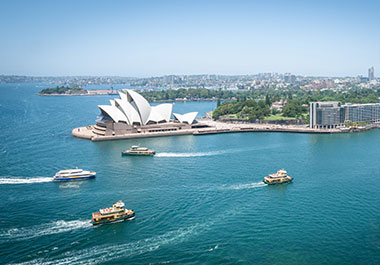 Photo by Peter Kolejak
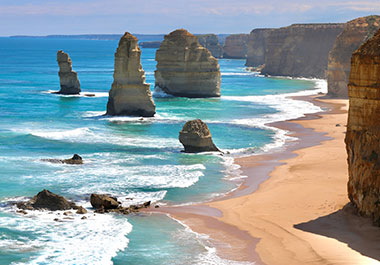 Great Ocean Road, Australia Photo by Adrian Bergen
 Photo by Peter Kolejak
|
 Photo by Peter Kolejak
Photo by Peter Kolejak Great Ocean Road, Australia
Great Ocean Road, Australia Photo by Peter Kolejak
Photo by Peter Kolejak